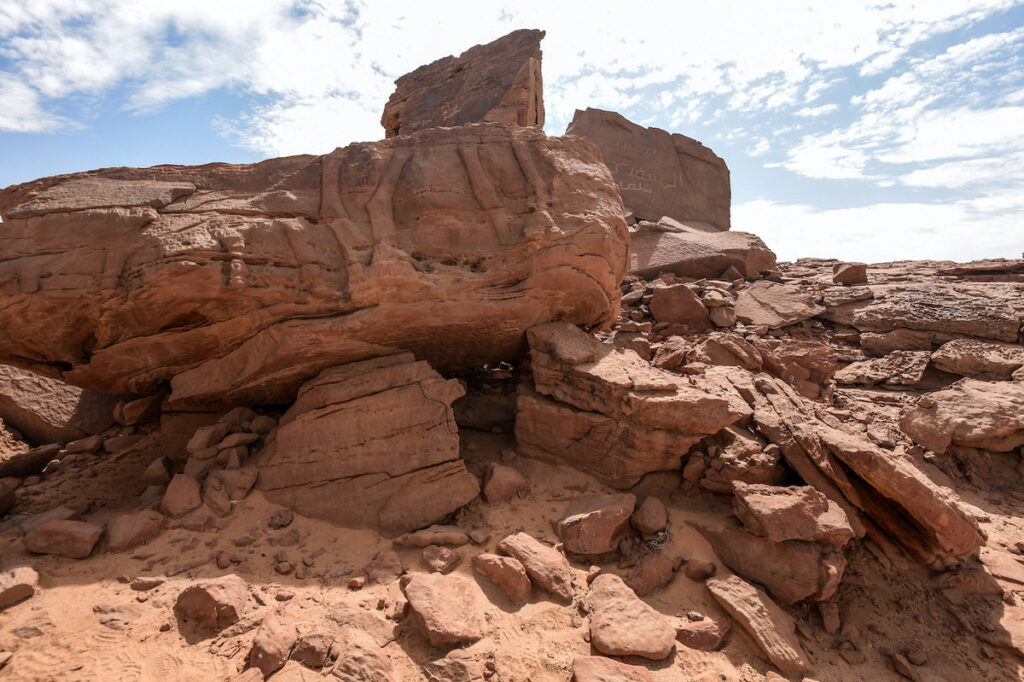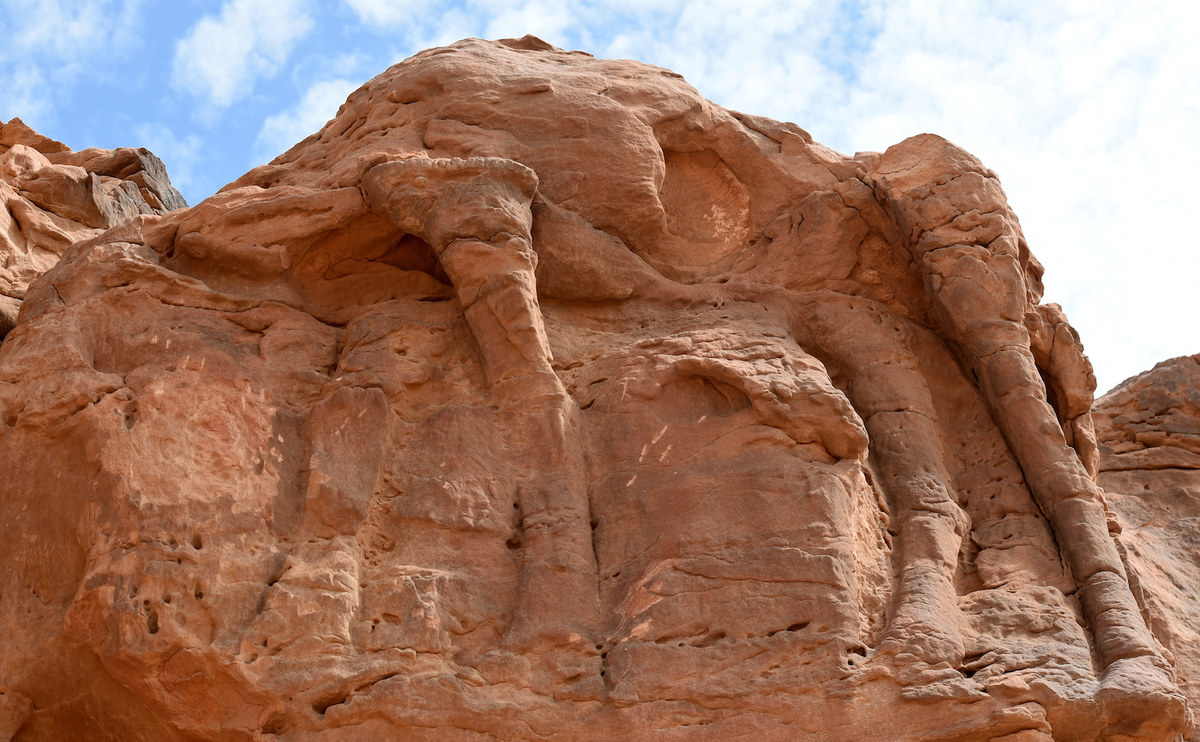Imagine a lush, green landscape where camels roam freely. This wasn’t a mirage, but the reality of Saudi Arabia 8,000 years ago, when a civilization carved life-size animal reliefs into the rock face. These remarkable sculptures, initially thought to be Roman-era creations, have been dramatically aged by a new study, making them the oldest surviving large-scale animal reliefs in the world.
Discovered in 2018, the “Camel Site” baffled archaeologists. The intricate carvings of camels, horses, and other unidentified creatures offered no clues about their creators or purpose. Initially, the Nabataeans, a powerful Roman-era empire known for their artistic pursuits, seemed like the likely culprits. However, a recent analysis published in the Journal of Archaeological Science: Reports throws a whole new light on these enigmatic artworks.

Through a meticulous examination of erosion patterns, tool marks, and animal bones found at the site, researchers determined the sculptures date back a staggering 7,000 to 8,000 years, placing them firmly in the Neolithic period. This pushes them back thousands of years from the initial estimate and into a prehistoric era when the Arabian landscape was vastly different. Instead of the vast sand dunes of today, the region boasted grassy plains dotted with lakes, a perfect habitat for the camels depicted in the carvings.

The study’s findings not only rewrite the history of the Camel Site but also raise intriguing questions. Why were these sculptures created? Were they religious symbols, markers for nomadic groups, or something else entirely? The researchers haven’t yet unraveled this mystery. However, they point out the sheer difficulty in creating such large-scale works in a time without modern tools. Some reliefs are positioned high on the rock face, hinting at the use of complex scaffolding techniques by the skilled artisans who brought these camels to life.
